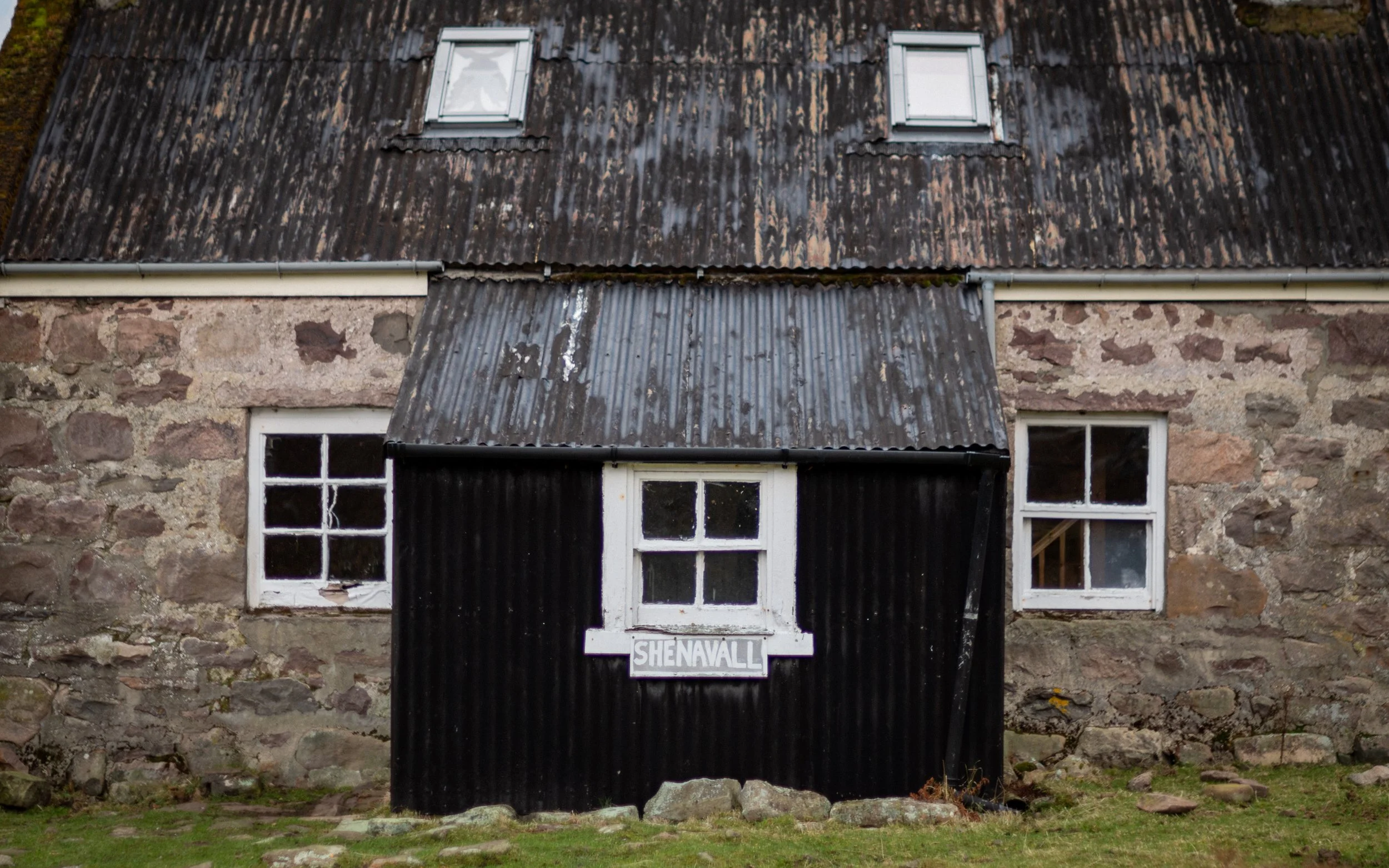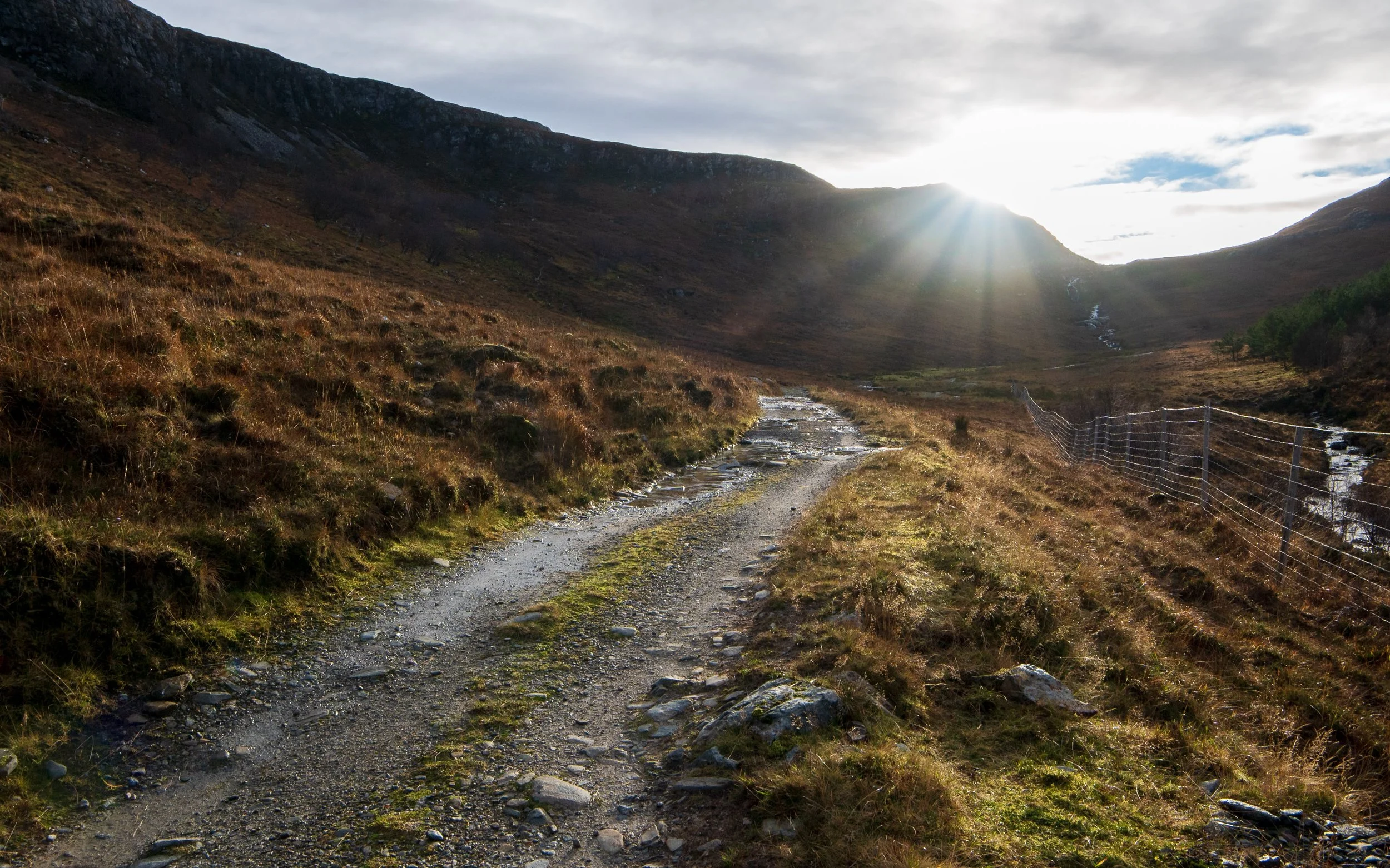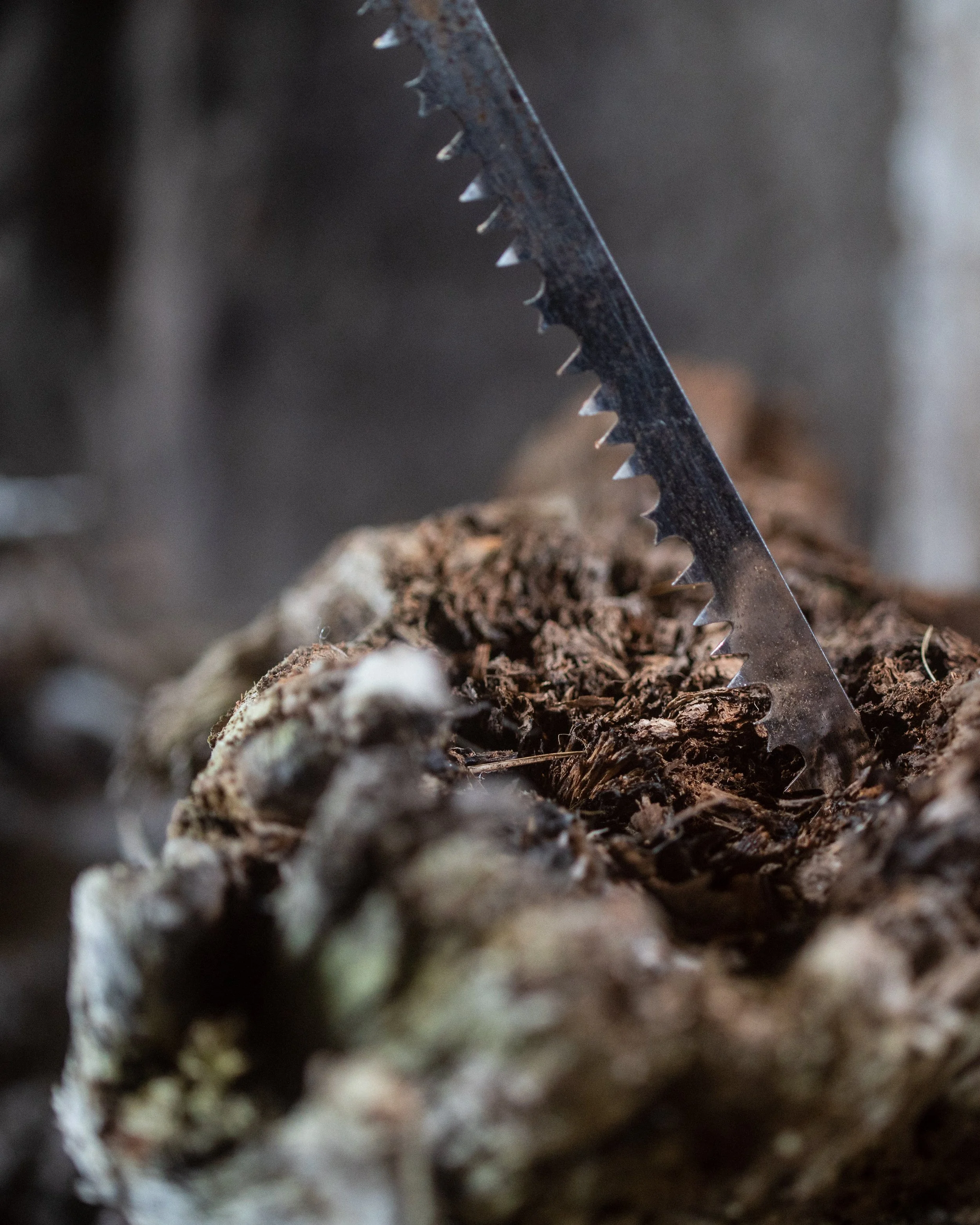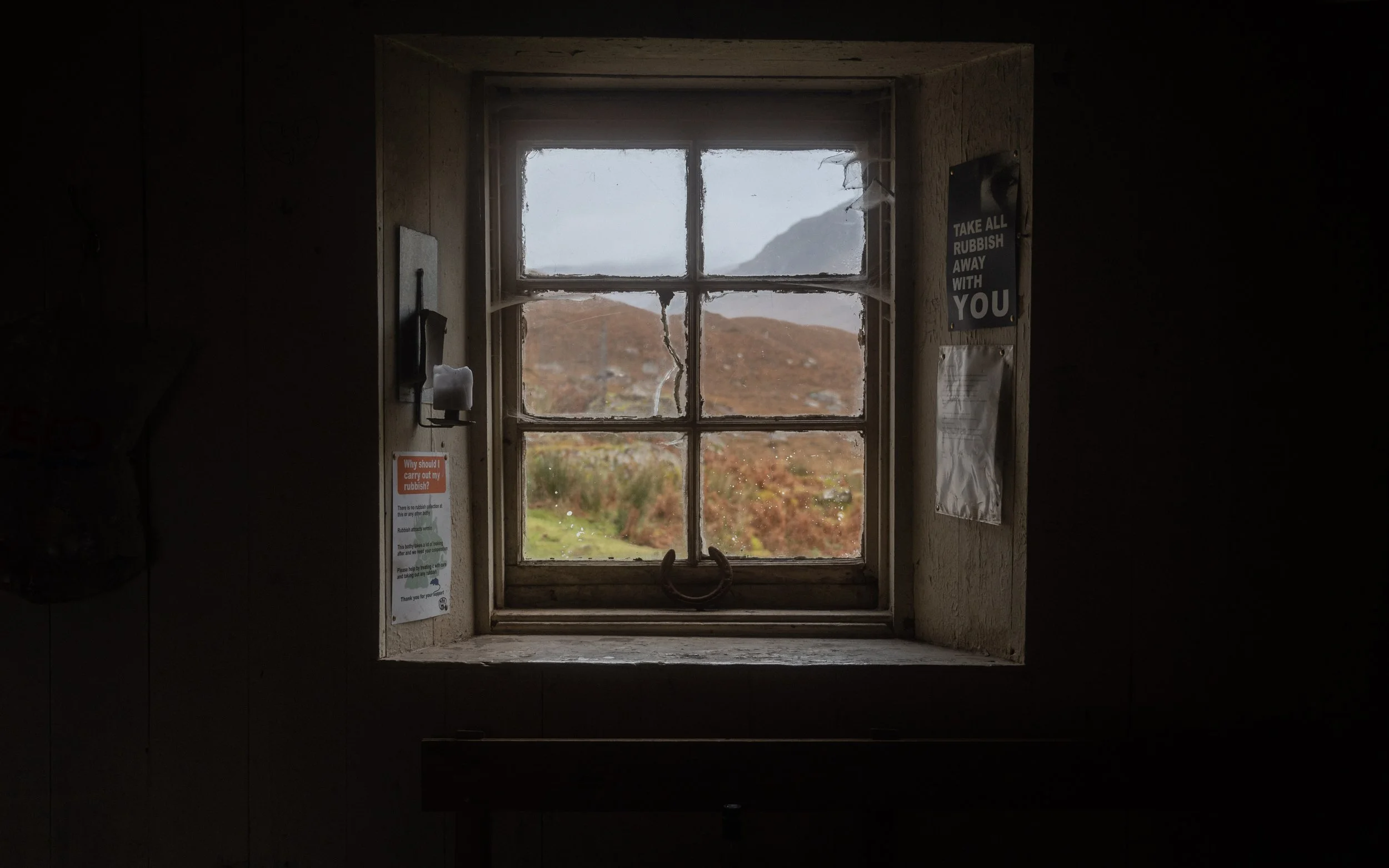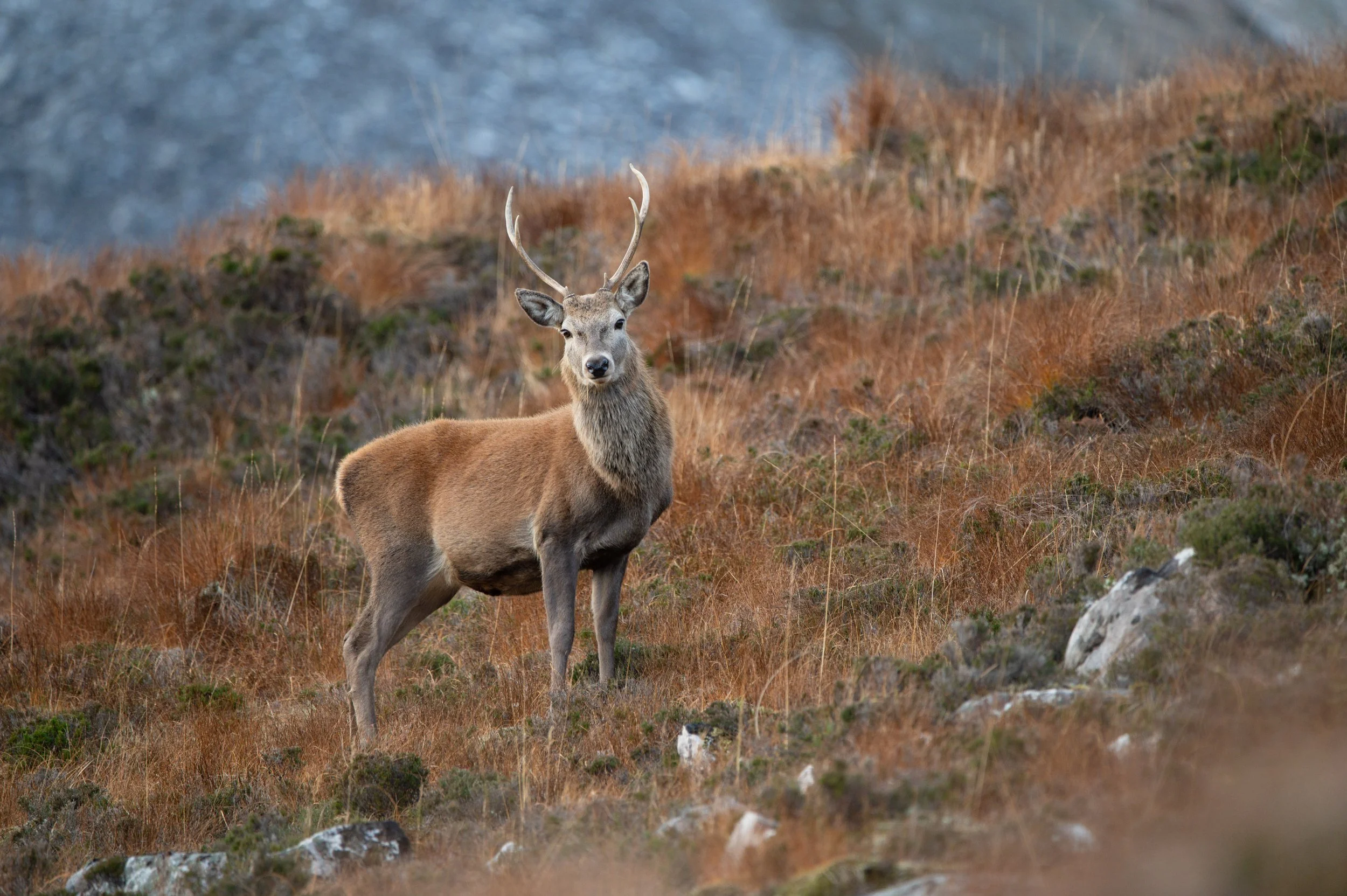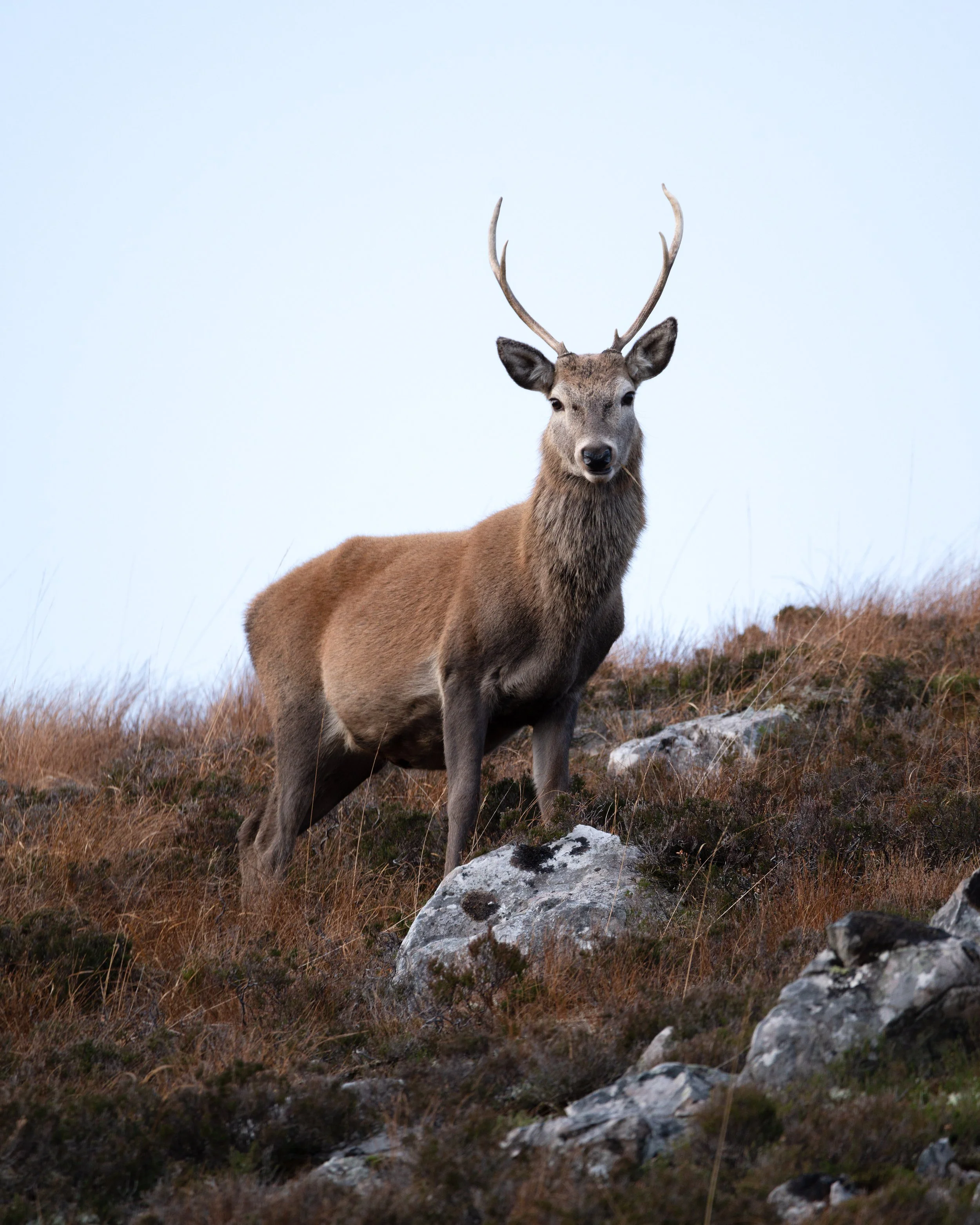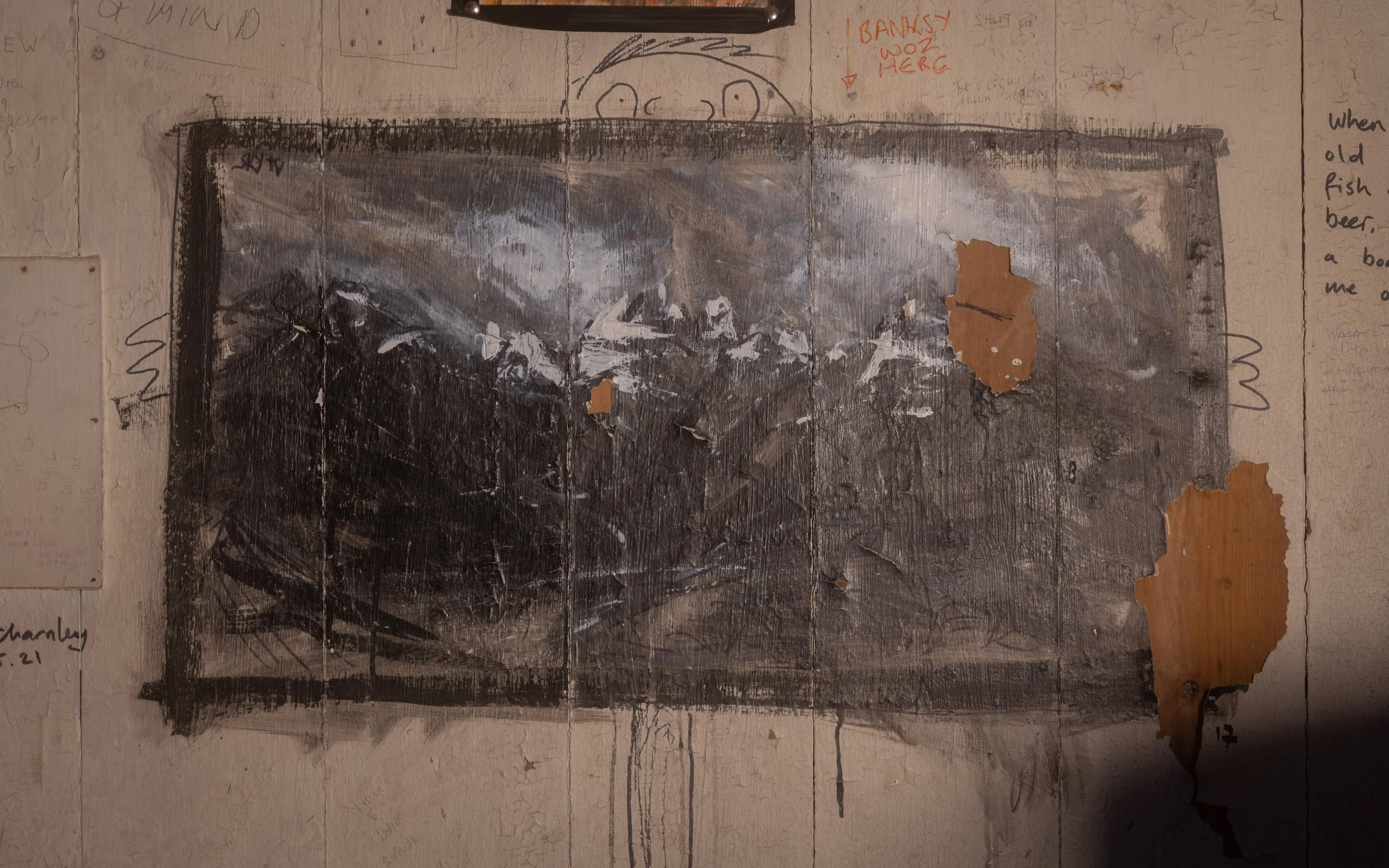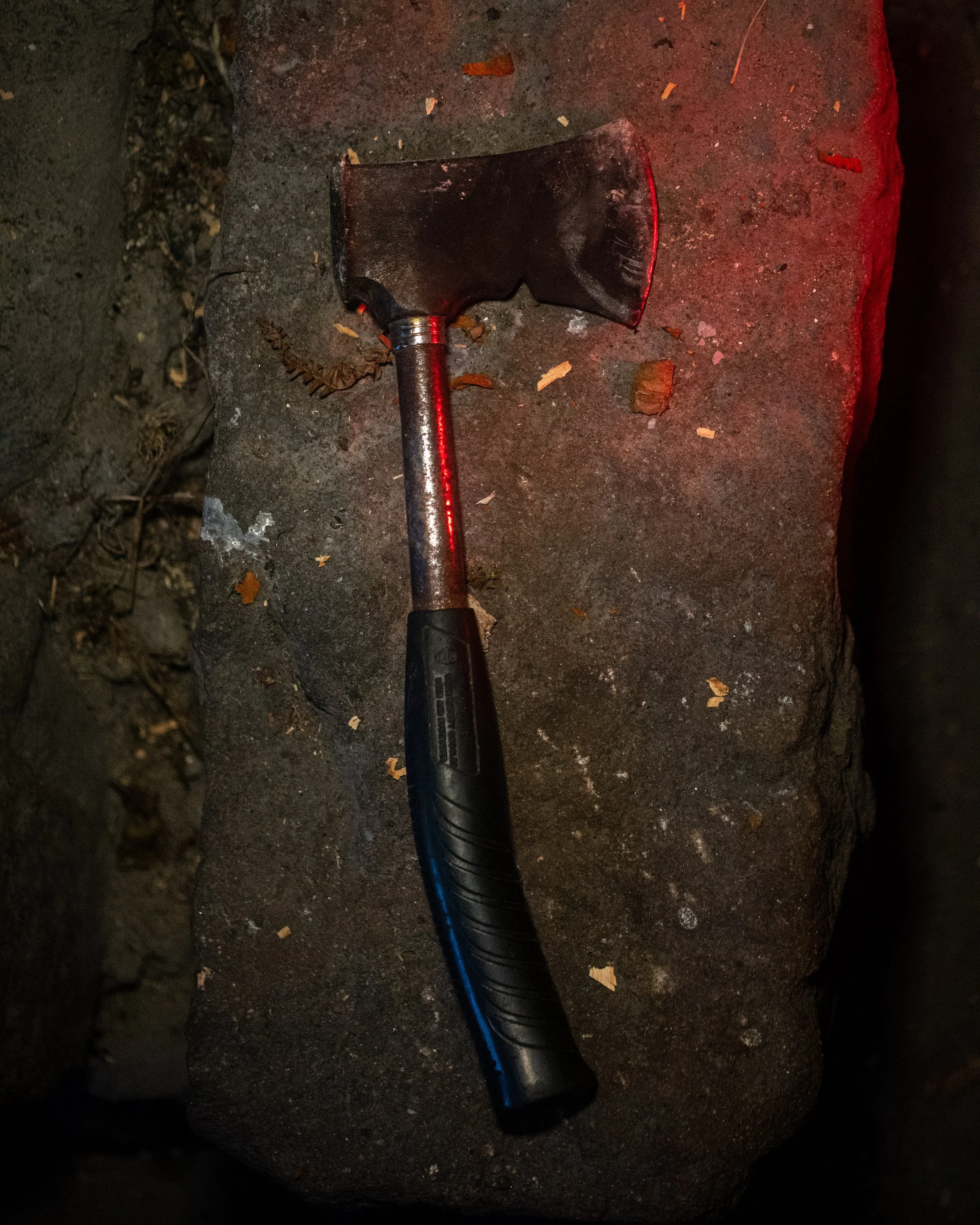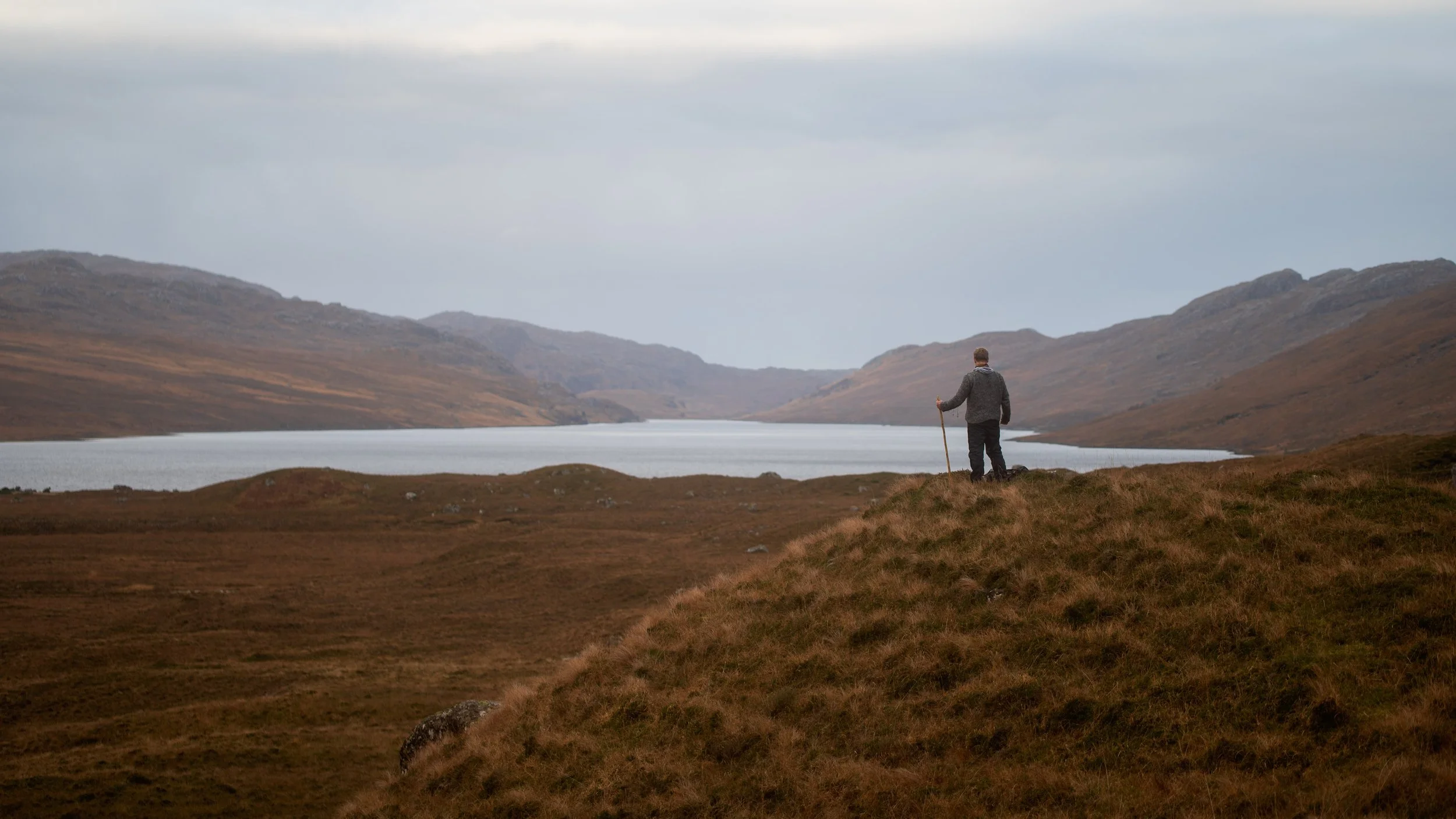Shenavall
Shenavall. 3 1/2 to 4 1/2 hours walk in with heavy pack. Wilderness and Isolation in Winter, Magnificent and Bustling in Summer.
The Northern Highlands have a way of drawing you in and Shenavall, in the flat plain of strath na sealga, offers an excellent base for exploration or spot for quiet reflection in magnificent landscape. This feels like wilderness or, at lelast, a facsimile thereof. An Teallach and Beinn Dearg Mòr loom invitingly as red Deer graze by Abhainn Srath na Sealga.
Shenavall is considered one of the flagship bothies of the Mountain Bothy Association and, as such, one can expect to meet a variety of bothy-goers during one’s stay. The reputation the bothy enjoys means that if you are walking in in-season then it is wise to be prepared to camp. Constructed in 1891 and occupied Colin MacDonald with his wife and child, the bothy allowed for an almost self-sufficient existence that was not without toil and hardship. The bothy was taken on by the Mountain Bothy Association in 1966 and has enjoyed a fine reputation amongst nature explorers ever since.
The route I approached the bothy started at Corrie Hallie car park. The car park is little more than a layby and without signage. The location given on Google Maps is correct and the signs at the start of the walk will help ease concerned minds as to the veracity of the location. The walk starts up the small track which has two signs from the estate and another sign on the other side of the track indicating the paths to Kinlochewe, Poolewe, and Gruinard.
The path leading up through Gleann Chaorachain
The path meanders uphill on easily recognisable tracks taking you into Gleann Chaorachain - treecreepers and long-tailed tits flitter hither and thither as you go. The river is to your right as you walk up the path until a small footbridge takes you across it and then path winds up until you reach a cairn. Shortly after the cairn the path forks. The right fork takes you on a path directly to the bothy (the left one will take you there, but on a more circuitous route). There are some small cairns to help mark the way to begin with but these disappear quickly.
The path is easy to lose here, especially in dark or snowy conditions, so be careful and be sure to consult your map regularly if unsure. If you find yourself alongside this Lochan, like I did, you have strayed too far up the hill and care should be taken on returning down to the path.
(Sail Leath in the moonlight as snow begins to fall)
The eventual descent to the bothy is steep and can be difficult with a heavy pack. Care is advised during this descent which, after some hours walking, can be frustrating with the bothy in sight. The concentration and consideration is well-placed, however.
Shenavall makes quite the postcard picture from the front. One can easily imagine several munro-bagging parties readying themselves for the day’s activities. The bothy is entered via a small exterior porch before leading into a small corridor in which the right will take you upstairs to the attic sleeping platform or left to the main room. The upstairs sleeping platform is airier than many other bothies with its velux windows. The walls and the wooden floor benefit from the light these windows provide to what might otherwise be a gloomy space. The main room has the hearth, a desk, chairs, benches, and a cooking/preparation counter. There is a second sleeping platform to the back of this room which is particularly cold but it is lighter than some give it credit.
The Bothy is often well supplied with fuel and firelighters but one should be prepared to search around for supplementary wood. Almost all the trees in the immediate vicinity of the bothy are living and should not be used for firewood. A trip to the stream is worth the short walk as there is often driftwood that has washed down the river – I’d recommend searching in and around the gorse bushes which line the stream, wood floating down is often snared by their thorns.
The hearth offers a surprisingly efficient source of heat for the bothy. Approach the bothy in the knowledge that you’ll almost certainly have to clean out the fireplace before you lay your own fire. There are saws, spades, shovels, and a hatchet at the bothy. The hatchet was more of a bludgeon than a blade so I would recommend taking a whetstone with you if you wish to make use of it.
Having travelled to the bothy in December, I was fortunate enough to have the place to myself (given I was seeking solitude). In the height of summer, I can imagine the bothy being a hubbub of activity and enjoying plenty of conversation and storytelling by the fire. The system of bothies is, in a way, a community. Embracing what is there is all part of it. There may be some housework to do on arrival and not everyone will be as conscientious about this as they might. Take it as you find it and endeavour to leave it in a better condition than you found it.
